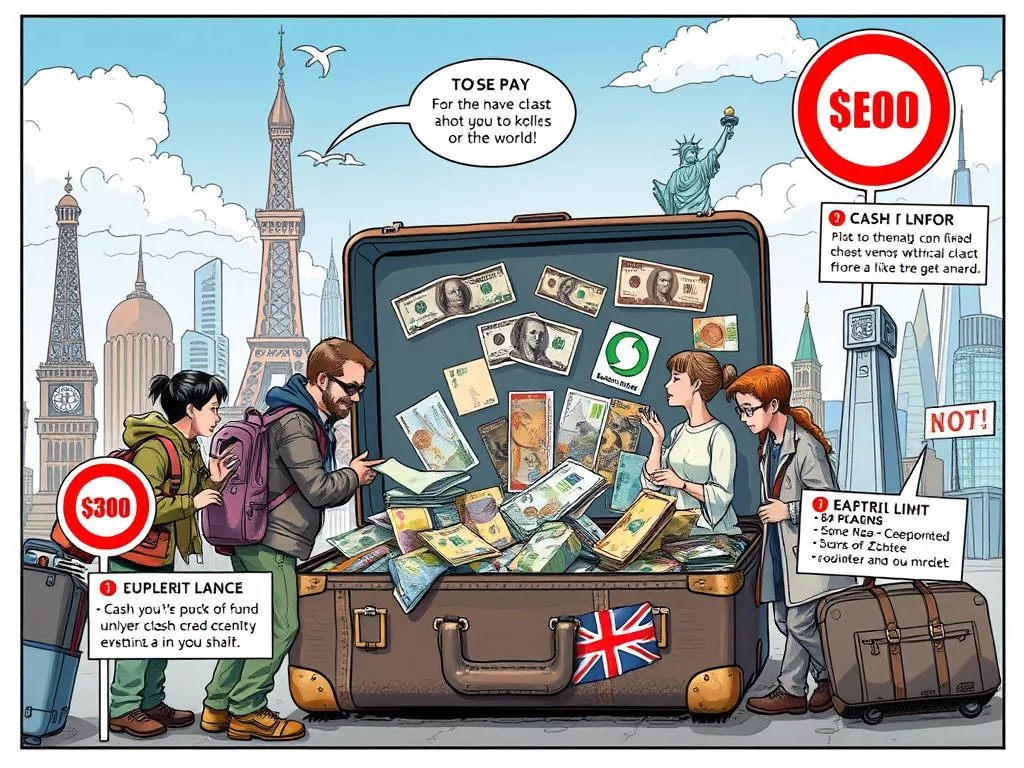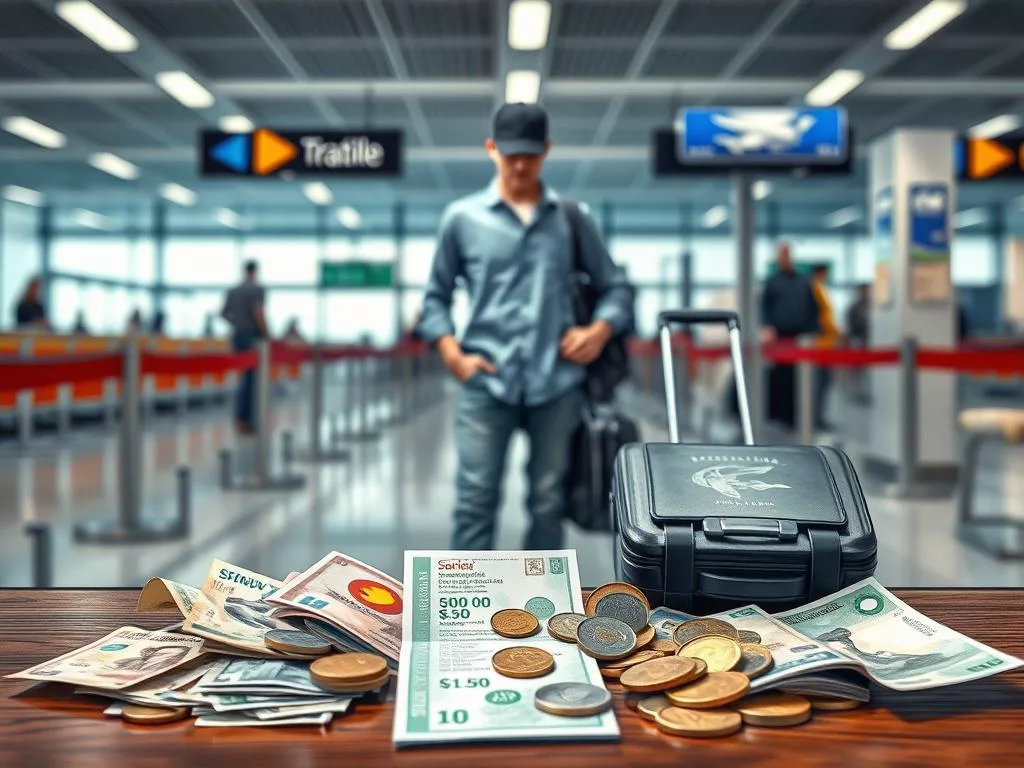Traveling abroad is exciting, but it has its financial hurdles. Knowing the rules for carrying money abroad is key for a hassle-free trip. Each country has its own rules on how much cash you can bring. For example, in the U.S., you must declare more than $10,000 when you arrive.
These rules are important for both legal and practical reasons. They help you manage your money better while traveling.
Figuring out how much cash to take on an international trip means looking at your destination’s rules and planning for emergencies. It’s smart to carry a combination of cash, cards, and traveler’s checks. This way, you can avoid money problems.
Also, knowing about local currency rules can prevent legal issues. For more advice on managing money while traveling, check out this comprehensive guide.
Understanding Cash Limitations When Traveling Internationally
When you plan to travel abroad, knowing about cash limits is key. Many countries have strict rules to stop money laundering and other bad activities. For example, in the European Union, you can’t carry more than €10,000. In the U.S., it’s $3,000. Australia and Canada also have limits of AU$10,000 and CA$10,000, respectively.
In the U.S., you must tell customs if you have more than $10,000 in cash or money-like items. This rule includes cash, traveler’s checks, and even gold or silver coins. It’s easy to forget that this limit is for everyone in your group, not just you. If you all have too much, you must all declare it.
If you don’t tell customs about more than $10,000, you could face big problems. This includes losing your money, fines, and even jail time. It could also hurt your chances of getting Global Entry. To avoid trouble, think about using traveler’s checks or prepaid cards instead of cash. Keeping records of where your money came from can also help.
- Declare cash exceeding $10,000 to avoid penalties.
- Consider using traveler’s checks or prepaid cards.
- Keep records of the source of your funds.
- Consult legal guidance if necessary.
To deal with cash limits well, watch how currency exchange rates change. Political and economic news can affect these rates. Banks usually offer the best rates and lowest fees for exchanging money.
It’s smart to use ATMs from big banks for lower fees and better security. Tell your bank you’re traveling to avoid losing access to your money. Keep a little local currency for souvenirs or future trips, but be aware of fees that can reduce its value.
For tips on saving money on international transactions, see this guide on cheap ways to pay international.

| Country | Cash Limit |
|---|---|
| European Union | €10,000 |
| United States | $10,000 |
| Australia | AU$10,000 |
| Canada | CA$10,000 |
Guide to how much money can I take abroad
Travelers often wonder how much money to carry abroad for a smooth trip. Initial expenses can quickly add up. It’s key to plan wisely for managing international travel funds.
Carrying enough cash for the first few days is recommended. This is for small transactions and emergencies. The limit for carrying foreign currency depends on the trip’s purpose.
For private visits, you can take up to USD 250,000 per financial year. This is under the RBI’s liberalized remittance scheme. For foreign currency notes and coins, you can bring up to USD 3,000 per visit.
Managing money for international travel requires a balanced approach. A mix of cash and cards is best. Cash is good for daily expenses, while cards are safer for larger purchases.
Take the equivalent of $50 to $100 per person per day for incidental costs. This ensures enough funds for unexpected expenses. It also allows for easy access to more money when needed. For more tips on cash management, you can read about the cheapest ways to get cash abroad.
For business trips, the same guidelines apply, allowing individuals to take USD 250,000 per financial year. If studying abroad, allocations for educational expenses may also be made. Remittance exceeding USD 250,000 is possible with adequate documentation.
Upon returning to India, travelers should surrender any unspent foreign currency notes and traveler’s cheques within 180 days. You can retain up to USD 2,000 for future visits. This shows the importance of planning ahead and understanding regulations for international travel funds management.
| Travel Purpose | Maximum Amount (Per Financial Year) | Cash Allowed Per Visit |
|---|---|---|
| Private Visit | USD 250,000 | USD 3,000 |
| Business Trip | USD 250,000 | USD 3,000 |
| Studying Abroad | USD 250,000 | N/A |

Alternative Payment Methods You Can Use Abroad
Traveling abroad can be easier with more than just cash. Using alternative payment methods abroad can make your trip better. Credit cards are handy and accepted almost everywhere, making transactions simple.
Forex cards are also popular for travelers. They let you set an exchange rate and avoid high fees. This is great for managing money, as it keeps your funds stable. Also, getting cash from ATMs can be cheaper than exchanging money, but check your bank’s fees first.
Digital payments like PayPal are safe for booking travel. They keep your card info private. For old-school options, buy gift cards for flights or hotels at stores. Always have a backup card and use contactless payments for safety. This way, you can travel worry-free. For more tips, see this guide on international payment methods.

